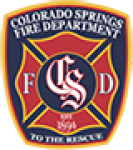Plan your escape!

Make sure that you practice your home fire escape drill at least twice a year. Ensure that everyone in our home knows how to get low and go under smoke, in case we need to escape through smoke. If the smoke alarm sounds, get outside of the home and stay outside, and then alert the fire department to any people or pets that may still be trapped inside.
According a National Fire Protection Association survey, only one of every three American households (32%) have actually developed and practiced a home fire escape plan.
Action Steps You Can Take
SAFETY TIP:
Practice your home fire escape plan several times a year and at different times of the day to make sure everyone remembers what to do.
- Make a map of your home indicating all windows and doors that can be used to get outside if the smoke alarm sounds.
- All members of the household have walked through the home to identify two ways out of each room.
- The home fire escape plan includes two ways out of every room in the home (usually a door and a window).
- All ways out of each room and the home are clear, free of clutter and can be opened easily.
- Security bars on doors and windows have a quick-release device so they can be used to get outside in case of a fire.
- There is a meeting place (a tree, neighbor’s home, street light) outside in front of the home where everyone knows to meet upon exiting.
- The house number can be clearly seen from the street.
- Your plan includes the local emergency telephone number (or 9-1-1) to be contacted immediately upon leaving the home.
- There are working smoke alarms in all required locations throughout the home; there’s at least one on every level of the home (including the basement), inside all bedrooms and outside each sleeping area.
You can download and print this Home Escape Plan flier for more information.

